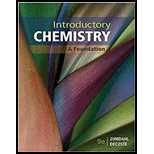
Introductory Chemistry: A Foundation
9th Edition
ISBN: 9781337399425
Author: Steven S. Zumdahl, Donald J. DeCoste
Publisher: Cengage Learning
expand_more
expand_more
format_list_bulleted
Concept explainers
Textbook Question
Chapter 9, Problem 96CP
Over the years, the thermite reaction has been used for welding railroad rails, in incendiary bombs, and to ignite solid fuel rocket motors. The reaction is
:math>
l type='a'>
Expert Solution & Answer
Trending nowThis is a popular solution!

Chapter 9 Solutions
Introductory Chemistry: A Foundation
Ch. 9.2 - ercise 9.1 Calculate the moles of CO2formed when...Ch. 9.3 - ercise 9.2 What mass of carbon dioxide is produced...Ch. 9.3 - ercise 9.3 Calculate the mass of water formed by...Ch. 9.3 - ur lab partner has made the observation that we...Ch. 9.3 - ercise 9.4 Hydrofluoric acid, an aqueous solution...Ch. 9.3 - ercise 9.5 In Example 9.6 we answered one of the...Ch. 9.5 - Lithium nitride, an ionic compound containing the...Ch. 9.6 - ercise 9.7 Titanium(IV) oxide is a white compound...Ch. 9 - elate Active Learning Question 2 from Chapter 2 to...Ch. 9 - You are making cookies and are missing a key...
Ch. 9 - Nitrogen (N2) and hydrogen (H2)react to form...Ch. 9 - Prob. 4ALQCh. 9 - ou know that chemical A reacts with chemical B....Ch. 9 - f 10.0 g of hydrogen gas is reacted with 10.0 g of...Ch. 9 - Prob. 7ALQCh. 9 - Prob. 8ALQCh. 9 - hat happens to the weight of an iron bar when it...Ch. 9 - Prob. 10ALQCh. 9 - What is meant by the term mole ratio? Give an...Ch. 9 - Which would produce a greater number of moles of...Ch. 9 - Consider a reaction represented by the following...Ch. 9 - Prob. 14ALQCh. 9 - Consider the balanced chemical equation...Ch. 9 - Which of the following reaction mixtures would...Ch. 9 - Baking powder is a mixture of cream of tartar...Ch. 9 - You have seven closed containers each with equal...Ch. 9 - Prob. 19ALQCh. 9 - Prob. 20ALQCh. 9 - Consider the reaction between NO(g)and...Ch. 9 - hat do the coefficients of a balanced chemical...Ch. 9 - he vigorous reaction between aluminum and iodine...Ch. 9 - Prob. 3QAPCh. 9 - hich of the following statements is true for the...Ch. 9 - or each of the following reactions, give the...Ch. 9 - or each of the following reactions, give the...Ch. 9 - Prob. 7QAPCh. 9 - Prob. 8QAPCh. 9 - onsider the balanced chemical equation...Ch. 9 - Write the balanced chemical equation for the...Ch. 9 - For each of the following balanced chemical...Ch. 9 - Prob. 12QAPCh. 9 - For each of the following balanced chemical...Ch. 9 - For each of the following balanced chemical...Ch. 9 - For each of the following unbalanced equations,...Ch. 9 - For each of the following unbalanced equations,...Ch. 9 - What quantity serves as the conversion factor...Ch. 9 - Prob. 18QAPCh. 9 - Using the average atomic masses given inside the...Ch. 9 - Using the average atomic masses given inside the...Ch. 9 - Using the average atomic masses given inside the...Ch. 9 - Using the average atomic masses given inside the...Ch. 9 - For each of the following unbalanced equations,...Ch. 9 - For each of the following unbalanced equations,...Ch. 9 - For each of the following unbalanced equations,...Ch. 9 - Boron nitride reacts with iodine monofluoride i...Ch. 9 - “Smelling salts,” which are used to revive someone...Ch. 9 - Calcium carbide, CaC2, can be produced in an...Ch. 9 - When elemental carbon is burned in the open...Ch. 9 - If baking soda (sodium hydrogen carbonate) is...Ch. 9 - Although we usually think of substances as...Ch. 9 - When yeast is added to a solution of glucose or...Ch. 9 - Sulfurous acid is unstable in aqueous solution and...Ch. 9 - Small quantities of ammonia gas can be generated...Ch. 9 - Elemental phosphorus bums in oxygen with an...Ch. 9 - Prob. 36QAPCh. 9 - Ammonium nitrate has been used as a high explosive...Ch. 9 - If common sugars arc heated too strongly, they...Ch. 9 - Thionyl chloride, SOCl2, is used as a very...Ch. 9 - Prob. 40QAPCh. 9 - Which of the following statements is(are) true? l...Ch. 9 - Explain how one determines which reactant in a...Ch. 9 - Consider the equation: 2A+B5C. If 10.0 g of A...Ch. 9 - Balance the following chemical equation, and then...Ch. 9 - For each of the following unbalanced reactions,...Ch. 9 - For each of the following unbalanced chemical...Ch. 9 - For each of the following unbalanced chemical...Ch. 9 - For each of the following unbalanced chemical...Ch. 9 - For each of the following unbalanced chemical...Ch. 9 - For each of the following unbalanced chemical...Ch. 9 - Lead(II) carbonate, also called “white lead,” was...Ch. 9 - Copper(II) sulfate has been used extensively as a...Ch. 9 - Lead(II) oxide from an ore can be reduced to...Ch. 9 - If steel wool (iron) is heated until it glows and...Ch. 9 - A common method for determining how much chloride...Ch. 9 - Although many sulfate salts are soluble in water,...Ch. 9 - Hydrogen peroxide is used as a cleaning agent in...Ch. 9 - Silicon carbide, SIC, is one of the hardest...Ch. 9 - Prob. 59QAPCh. 9 - The text explains that one reason why the actual...Ch. 9 - According to his prelaboratory theoretical yield...Ch. 9 - An air bag is deployed by utilizing the following...Ch. 9 - The compound sodium thiosutfate pentahydrate....Ch. 9 - Alkali metal hydroxides are sometimes used to...Ch. 9 - Although they were formerly called the inert...Ch. 9 - Solid copper can be produced by passing gaseous...Ch. 9 - Prob. 67APCh. 9 - Prob. 68APCh. 9 - Prob. 69APCh. 9 - When the sugar glucose, C6H12O6, is burned in air,...Ch. 9 - When elemental copper is strongly heated with...Ch. 9 - Barium chloride solutions are used in chemical...Ch. 9 - The traditional method of analysis for the amount...Ch. 9 - For each of the following reactions, give the...Ch. 9 - Prob. 75APCh. 9 - Consider the balanced equation...Ch. 9 - For each of the following balanced reactions,...Ch. 9 - For each of the following balanced equations,...Ch. 9 - Prob. 79APCh. 9 - Using the average atomic masses given inside the...Ch. 9 - For each of the following incomplete and...Ch. 9 - Prob. 82APCh. 9 - Prob. 83APCh. 9 - It sodium peroxide is added to water, elemental...Ch. 9 - When elemental copper is placed in a solution of...Ch. 9 - When small quantities of elemental hydrogen gas...Ch. 9 - The gaseous hydrocarbon acetylene, C2H2, is used...Ch. 9 - For each of the following unbalanced chemical...Ch. 9 - For each of the following unbalanced chemical...Ch. 9 - Hydrazine N2H4, emits a large quantity of energy...Ch. 9 - Consider the following reaction:...Ch. 9 - Before going to lab, a student read in his lab...Ch. 9 - Consider the following unbalanced chemical...Ch. 9 - Prob. 94CPCh. 9 - Consider the following unbalanced chemical...Ch. 9 - Over the years, the thermite reaction has been...Ch. 9 - Consider the following unbalanced chemical...Ch. 9 - Ammonia gas reacts with sodium metal to form...Ch. 9 - Prob. 99CPCh. 9 - he production capacity for acrylonitrile (C3H3N)in...Ch. 9 - Prob. 1CRCh. 9 - erhaps the most important concept in introductory...Ch. 9 - ow do we know that 16.00 g of oxygen Contains the...Ch. 9 - Prob. 4CRCh. 9 - hat is meant by the percent composition by mass...Ch. 9 - Prob. 6CRCh. 9 - Prob. 7CRCh. 9 - Prob. 8CRCh. 9 - Prob. 9CRCh. 9 - Consider the unbalanced equation for the...Ch. 9 - Prob. 11CRCh. 9 - What is meant by a limiting reactant in a...Ch. 9 - Prob. 13CRCh. 9 - Prob. 14CRCh. 9 - Prob. 15CRCh. 9 - Prob. 16CRCh. 9 - A compound was analyzed and was found to have the...Ch. 9 - Prob. 18CRCh. 9 - Prob. 19CRCh. 9 - Solid calcium carbide (CaC2)reacts with liquid...Ch. 9 - A traditional analysis for samples containing...
Knowledge Booster
Learn more about
Need a deep-dive on the concept behind this application? Look no further. Learn more about this topic, chemistry and related others by exploring similar questions and additional content below.Similar questions
- The balanced equation for the reduction of iron ore to the metal using CO is Fe2O3(s) + 3 CO(g) 2 Fe(s) + 3 CO2(g) (a) What is the maximum mass of iron, in grams, that can be obtained from 454 g (1.00 lb) of iron(III) oxide? (b) What mass of CO is required to react with 454 g cot Fe2O3?arrow_forwardSilicon is produced for the chemical and electronics industries by the following reactions. Give the balanced equation for each reaction. a. SiO2(s)+C(s)arefurnaceElectricSi(s)+CO(g) b. Liquid silicon tetrachloride is reacted with very pure solid magnesium, producing solid silicon and solid magnesium chloride. c. Na2SiF6(s) + Na(s) Si(s) + NaF(s)arrow_forwardA titanium ore contains rutile (TiO2) plus some iron oxide and silica. When it is heated with carbon in the presence of chlorine, titanium tetrachloride, TiCl4, is formed. TiO2(s)+C(s)+2Cl2(g)TiCl4(g)+CO2(g) Titanium tetrachloride, a liquid, can be distilled from the mixture. If 35.4 g of titanium tetrachloride is recovered from 18.1 g of crude ore, what is the mass percentage of TiO2 in the ore (assuming all TiO2 reacts)?arrow_forward
- The principal component of mothballs is naphthalene, a compound with a molecular mass of about 130 amu, containing only carbon and hydrogen. A 3.000-mg sample of naphthalene burns to give 10.3 mg of CO2. Determine its empirical and molecular formulas.arrow_forward4.69 The pictures below show a molecular-scale view of a chemical reaction between H2 and CO to produce methanol, CH3OH. The box on the left represents the reactants at the instant of mixing, and the box on the right shows what is left once the reaction has gone to completion. Was there a limiting reactant in this reaction? If so, what was it? Write a balanced chemical equation for this reaction. As usual, your equation should use the smallest possible whole number coefficients for all substances.arrow_forward3.113 MgCl2 is often found as an impurity in table salt (NaCl). If a 0.05200-g sample of table salt is found to contain 61.10% Cl by mass, describe how you could determine the percentage of MgCl2 in the sample.arrow_forward
arrow_back_ios
arrow_forward_ios
Recommended textbooks for you
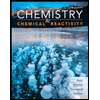 Chemistry & Chemical ReactivityChemistryISBN:9781337399074Author:John C. Kotz, Paul M. Treichel, John Townsend, David TreichelPublisher:Cengage Learning
Chemistry & Chemical ReactivityChemistryISBN:9781337399074Author:John C. Kotz, Paul M. Treichel, John Townsend, David TreichelPublisher:Cengage Learning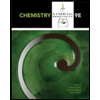 Chemistry & Chemical ReactivityChemistryISBN:9781133949640Author:John C. Kotz, Paul M. Treichel, John Townsend, David TreichelPublisher:Cengage Learning
Chemistry & Chemical ReactivityChemistryISBN:9781133949640Author:John C. Kotz, Paul M. Treichel, John Townsend, David TreichelPublisher:Cengage Learning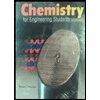 Chemistry for Engineering StudentsChemistryISBN:9781337398909Author:Lawrence S. Brown, Tom HolmePublisher:Cengage Learning
Chemistry for Engineering StudentsChemistryISBN:9781337398909Author:Lawrence S. Brown, Tom HolmePublisher:Cengage Learning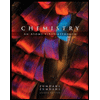 Chemistry: An Atoms First ApproachChemistryISBN:9781305079243Author:Steven S. Zumdahl, Susan A. ZumdahlPublisher:Cengage Learning
Chemistry: An Atoms First ApproachChemistryISBN:9781305079243Author:Steven S. Zumdahl, Susan A. ZumdahlPublisher:Cengage Learning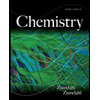
 ChemistryChemistryISBN:9781305957404Author:Steven S. Zumdahl, Susan A. Zumdahl, Donald J. DeCostePublisher:Cengage Learning
ChemistryChemistryISBN:9781305957404Author:Steven S. Zumdahl, Susan A. Zumdahl, Donald J. DeCostePublisher:Cengage Learning

Chemistry & Chemical Reactivity
Chemistry
ISBN:9781337399074
Author:John C. Kotz, Paul M. Treichel, John Townsend, David Treichel
Publisher:Cengage Learning

Chemistry & Chemical Reactivity
Chemistry
ISBN:9781133949640
Author:John C. Kotz, Paul M. Treichel, John Townsend, David Treichel
Publisher:Cengage Learning

Chemistry for Engineering Students
Chemistry
ISBN:9781337398909
Author:Lawrence S. Brown, Tom Holme
Publisher:Cengage Learning

Chemistry: An Atoms First Approach
Chemistry
ISBN:9781305079243
Author:Steven S. Zumdahl, Susan A. Zumdahl
Publisher:Cengage Learning


Chemistry
Chemistry
ISBN:9781305957404
Author:Steven S. Zumdahl, Susan A. Zumdahl, Donald J. DeCoste
Publisher:Cengage Learning
Types of Matter: Elements, Compounds and Mixtures; Author: Professor Dave Explains;https://www.youtube.com/watch?v=dggHWvFJ8Xs;License: Standard YouTube License, CC-BY